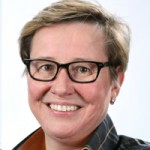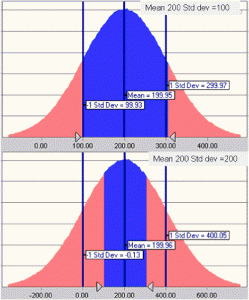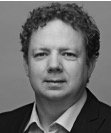Pensioencolumn
| 20-07-2016 | Erna Erkens |

Nederland moet over naar een nieuw pensioenstelsel vinden de Sociaal-Economische Raad (SER), Klaas Knot en de pensioenfondsen zelf. De SER wil persoonlijke pensioenpotjes met een collectieve risicodeling. Dit snap ik niet. We moeten naar een pensioenstelsel waarbij de mensen precies weten waar ze aan toe zijn.
Volgens mij staat dit ieder jaar in mijn Uniform Pensioen Overzicht. Daar staat precies in hoeveel pensioen ik ontvang op jaarbasis, vanaf mijn pensioengerechtigde leeftijd. Ik weet wel dat het risico nu bij de pensioenfondsen ligt en dat dit in goede tijden nooit een probleem was. Sterker nog, dan haalt de overheid er geld uit (ABP). Er is toch genoeg.
Nu is het andersom en krijgen de mensen korting op hun uitgestelde loon, want dat is pensioen. Ook moet het risico naar de mensen zelf bij lage rentes. Dan kunnen de pensioenfondsen nooit aangesproken worden op hun verantwoordelijkheid. De mensen moeten dan zelf gaan bepalen waar in belegd zal worden. Dat is lekker makkelijk. Wel de lusten, maar niet de lasten. Dan hebben we ineens geen last van zorgplicht en of de pensioengerechtigden wel ter zake deskundig genoeg zijn om te bepalen waar ze in moeten beleggen als ze over 20 jaar een jaarsalaris aan pensioen bij elkaar moeten sparen. Ik snap het echt niet.
Nu worden banken aangeklaagd als er producten verkocht worden die de klanten niet kunnen begrijpen en bij de meest ingewikkelde materie gaan we de verantwoordelijkheid neerleggen bij degenen die er helemaal geen verstand van hebben. Stel dat over 5 jaar de lage rente weer 4% is, dan is er ineens geen probleem meer. Willen de pensioenfondsen het risico(en de extra opbrengsten) dan wel weer terug ?
Pensioenfondsen moeten hand in eigen boezem steken. Niet goed belegd en niet het renterisico van een dalende rente afgedekt. Gewoon slecht gedaan. Terug naar de tekentafel en andere beleggingsstrategie bedenken. Misschien te rade gaan bij onderstaande 10 hedgefunds eigenaren en niet zelf het wiel willen uitvinden. Eén van de belangrijkste lessen van deze mensen is altijd consequent zijn bij je strategie. Nooit wachten op meer winst of minder verlies, maar altijd je beleggingsstrategie blijven volgen. Succes en niet in slecht tijden je verantwoordelijkheid afwimpelen.


Owner at Erna Erkens Valuta Advies (EEVA)

 One of the drawbacks of modern financial modeling in its most rudimentary form (projected P&L, Balance Sheet and Cash-flow statement) is the absence of uncertainty in the equation. Let’s presume you have built an excel model where all the common financial statements are present, accompanied by a capital budget and a loan sheet. With relational checks between accounting statements, you as the financial analyst manage to keep all these statements neatly tied together.
One of the drawbacks of modern financial modeling in its most rudimentary form (projected P&L, Balance Sheet and Cash-flow statement) is the absence of uncertainty in the equation. Let’s presume you have built an excel model where all the common financial statements are present, accompanied by a capital budget and a loan sheet. With relational checks between accounting statements, you as the financial analyst manage to keep all these statements neatly tied together. 

 Willem van Overveld – Allround finance / treasury professional
Willem van Overveld – Allround finance / treasury professional The holiday season is finally here! While relaxing on the beach in Ibiza or making new memories in Bali, take some time to think about your career. Wait, what? Yes, do some thinking about your career between cocktails and sunbathing. Maybe it’s time to take your career to the next level by freshen up your knowledge or learning something new. treasuryXL has collected some of the education programs that take place in September.
The holiday season is finally here! While relaxing on the beach in Ibiza or making new memories in Bali, take some time to think about your career. Wait, what? Yes, do some thinking about your career between cocktails and sunbathing. Maybe it’s time to take your career to the next level by freshen up your knowledge or learning something new. treasuryXL has collected some of the education programs that take place in September. Stephanie Derkse – Community Manager treasuryXL
Stephanie Derkse – Community Manager treasuryXL



 Almost 3 months ago, treasuryXL went live. Not knowing how people would respond, we pushed the buttons and worked our hardest to make treasuryXL a success. Since then we’ve learned something new everyday by publishing fresh content everyday and keeping in contact with you, the treasury community. I’m really proud of what we have reached so far and we will continue to improve treasuryXL. Your ideas and suggestions are always welcome!
Almost 3 months ago, treasuryXL went live. Not knowing how people would respond, we pushed the buttons and worked our hardest to make treasuryXL a success. Since then we’ve learned something new everyday by publishing fresh content everyday and keeping in contact with you, the treasury community. I’m really proud of what we have reached so far and we will continue to improve treasuryXL. Your ideas and suggestions are always welcome!

 An increasing number of bankers come to my recruitment desk wanting to make a transfer to corporate treasury. This transfer can be made successfully but there are a number of things to take into account. Below the 8 career hurdles, I hear most about, in a transfer from banking to corporate treasury.
An increasing number of bankers come to my recruitment desk wanting to make a transfer to corporate treasury. This transfer can be made successfully but there are a number of things to take into account. Below the 8 career hurdles, I hear most about, in a transfer from banking to corporate treasury. 
 De afgelopen week zijn er grote verschillen gezien in de koers van de Britse pond na de uitslag van het referendum. In januari 2015 werd de markt ook al eens verrast door een onverwachte gebeurtenis: De Zwitserse Centrale Bank (SNB) veroorzaakte toen een schokgolf met het onverwacht loslaten van de ‘peg’ tussen de EUR en de CHF.
De afgelopen week zijn er grote verschillen gezien in de koers van de Britse pond na de uitslag van het referendum. In januari 2015 werd de markt ook al eens verrast door een onverwachte gebeurtenis: De Zwitserse Centrale Bank (SNB) veroorzaakte toen een schokgolf met het onverwacht loslaten van de ‘peg’ tussen de EUR en de CHF.  René Schilder – Co Owner at 2FX Treasury BV
René Schilder – Co Owner at 2FX Treasury BV
